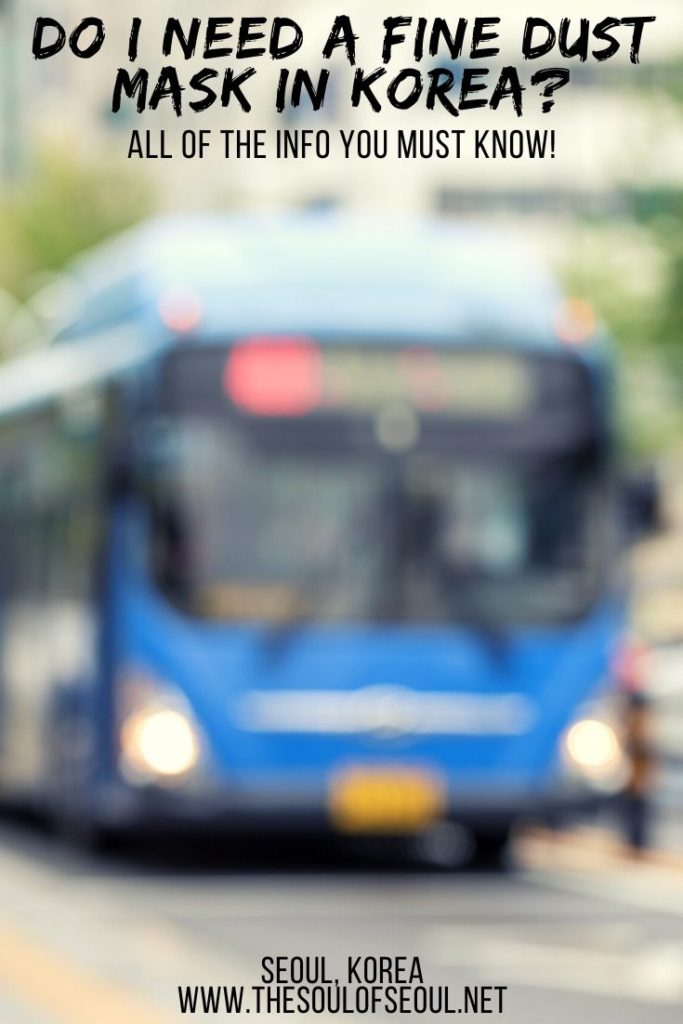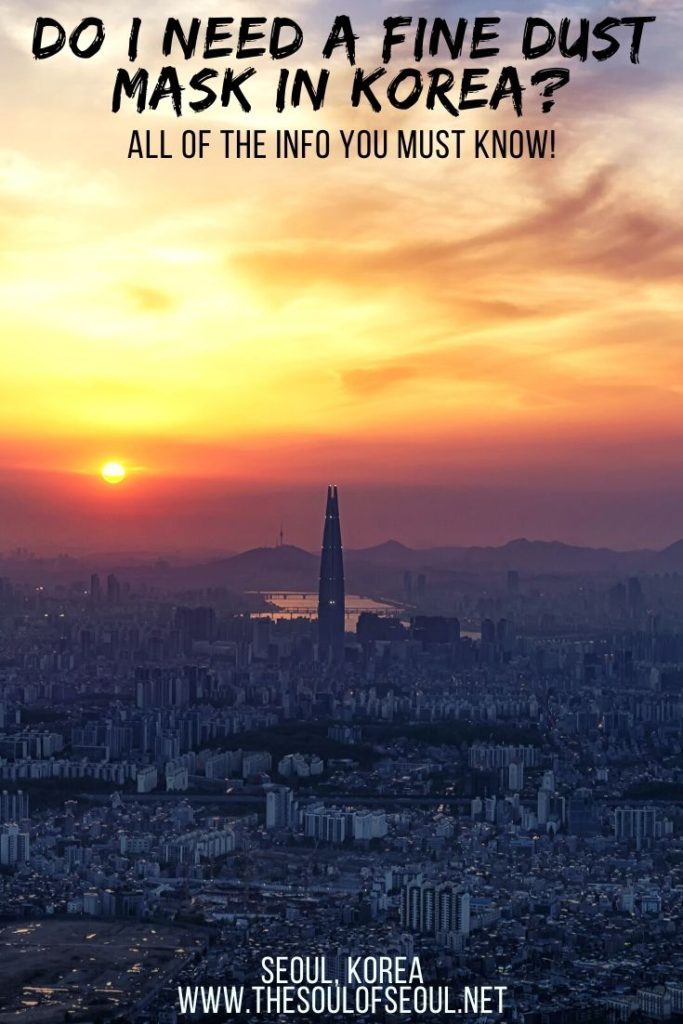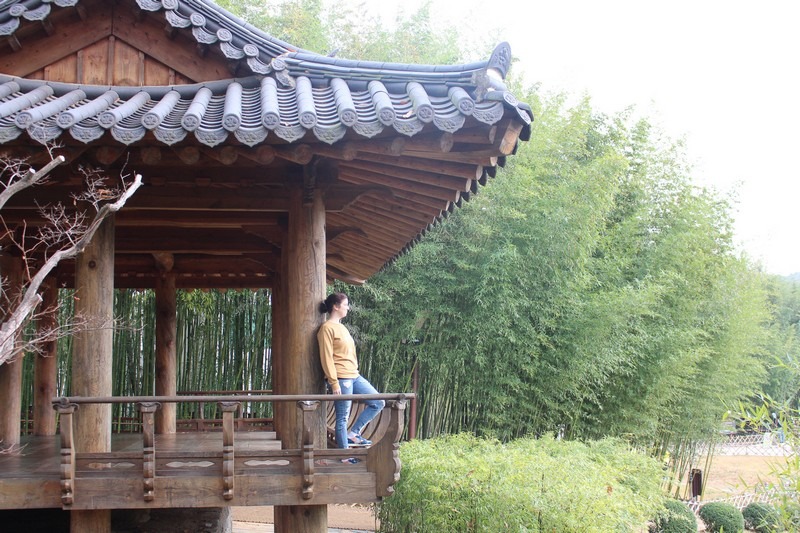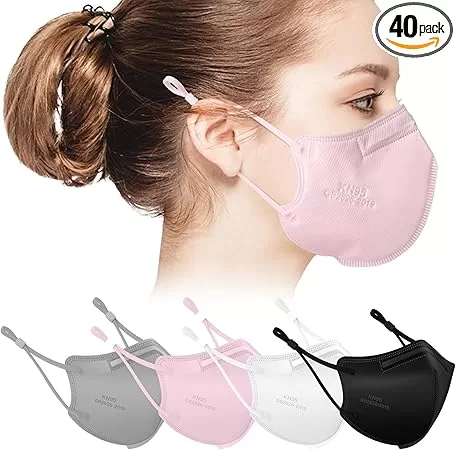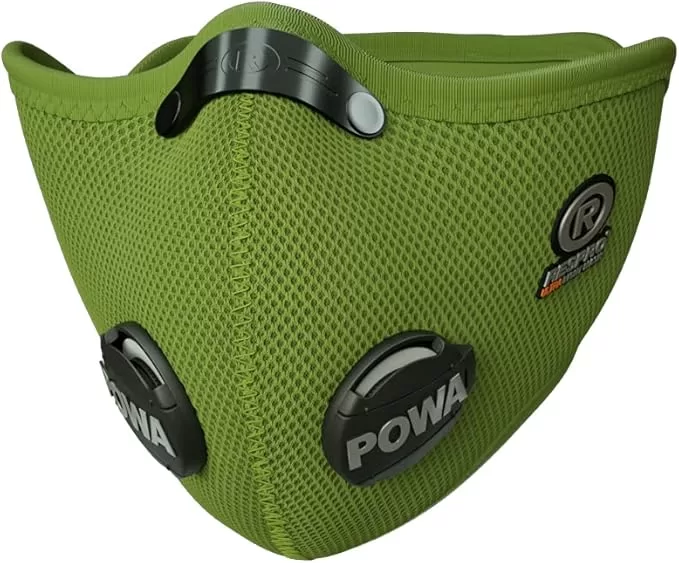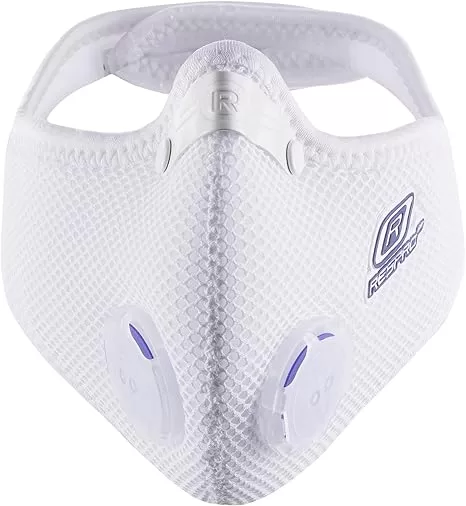Do I Need A Fine Dust Mask In Korea?
We aren’t living in a smog filled polluted country all of the time, but when it’s bad, it can be pretty bad. While most advanced countries in the world are decreasing their reliance on coal for energy, Korea has actually been increasing their coal-fired power plants. We could get into the reasons and place blame, but that’s really for another article. For this one I want to answer the questions I have been getting from tourists.
Do I need a fine dust mask in Korea? Which fine dust mask is best for Korea? Can I go outside when fine dust levels are high? This is useful information for not only tourists but also those foreigners residing in Korea, so definitely keep reading. If you’ll be coming to Korea to travel, definitely check out this very complete packing list too so you know what else you’ll need to bring in every season.

Seoul is beautiful and there is a lot to do. The fine dust levels aren’t always high either but it’s just best to be prepared. This entire summer was gorgeous and it seemed people forgot we had a problem until winter struck and with it the weather phenomenon that don’t allow the dust to dissipate. Koreans and locals are stuck once again in the smog.
Skip ahead to what you’re looking for here:
- What is fine dust and where is it coming from? Is yellow dust the same thing?
- How can I check the dust levels?
- What kind of mask is the best for the fine dust?
- Are surgical masks effective for fine dust?
- Which fine dust mask is right for me?
- Can I go outside when the dust levels are high?
- Where can we go on high dust days in Seoul?
- Why do Koreans still open the windows on high dust days?
Side Note: I am NOT a doctor and am only making recommendations based on my own research.
(This post contains affiliate links, which means I receive a certain percentage of a sale if you purchase after clicking at no cost to you. Thank you for your support.)
What is fine dust and where is it coming from? Is yellow dust the same thing?
When I first came to Korea I remember walking out my door in the spring to see a yellow sky and a fine layer of yellow dust on windshields of cars. I remember reading about how this yellow dust originated in the deserts of China and Mongolia and due to deforestation was blowing into Korea more and more. What is happening in Korea right now is NOT that! Yes, there is still yellow dust, but it’s most definitely not the ONLY dust that’s covering the country anymore.
When it was just yellow dust, the sky would actually be yellow sometimes. Now the sky is just grey, dark, and horrible. If you listen to Korean news, you’ll be told it’s still just all coming from China, but it’s homegrown now too and it’s bad.
I was on a TBSEfm radio show talking about dust and how it has affected our family and the expert on the panel was a doctor who went into vivid detail about how this dust can cause allergies, lung disease, and brain dysfunction. It is no joke and you absolutely want to be prepared and protect your little ones if you’ll have them here.
Whether it’s coming from China or is homegrown doesn’t really matter for this specific article as I’m just going to be explaining how you can and need to protect yourself against the hazardous pollutants filling the air.
How can I check the dust levels?
There are various apps available but the best ones will be the Korean ones that will update in real time. While you might not be able to understand all of the words, you will definitely be able to understand the colors.
The apps work in the same way as stop lights with green being good to go, yellow which can affect sensitive groups, orange being slow down and don’t stay out too long, and red being stop stop stop don’t go anywhere, and rarely but sometimes you might see purple/brown which means it’s highly dangerous. If it is this high, there are public kindergartens that will actually close and recommend that parents do NOT take their children out at all. (NOTE: If you’re using a Korean app, the “good” color is probably blue which Koreans see as better than “green air”.)
Websites: There are a few websites that you can use to check air quality in real time including AQICN.org, Cleanair.Seoul, Airkorea
When looking at the sites or apps though, it’s important to know what it is you’re really seeing. There is a lot of information so it can be overwhelming. The colors are straight forward so start with that. BUT, if you want a better break down of the numbers, here are some key things to know:
Air Quality Index (AQI): This is a bit like an average and is a good number to check out for an overall idea of what’s going on outside. It takes a lot of conditions in to factor the number so it’s definitely an all encompassing measurement which I prefer to look at.
PM2.5/PM10: The numbers 2.5 and 10 refer to the size of the particles in the pollution. 2.5 is the particles under 2.5 micrometers and the 10 refers to all particles under 10 micrometers. The fine dust you’re hearing about refers to these particles but the PM2.5 is more dangerous and therefore is what I keep an eye on generally. Both are dangerous, but for the people at risk, and for respiratory issues, it’s the PM2.5 that will really get you.
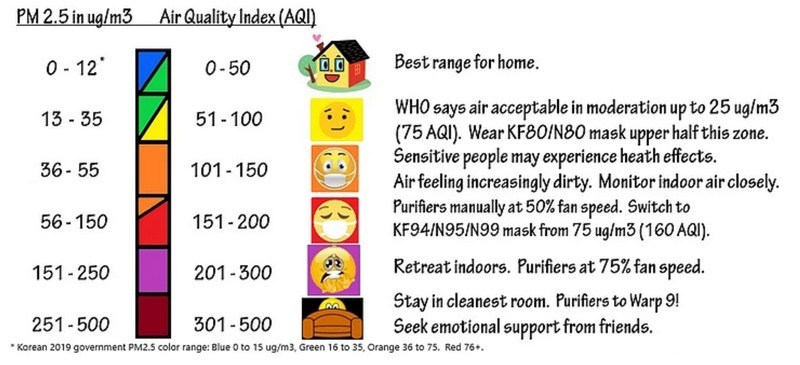
What number is good/bad? While no number is a good number above 0, living in a city isn’t exactly the spot that will see that happening. For us personally, we go out when it’s green and yellow, but once it starts to get into the oranges, we do more inside. When it’s red, we definitely don’t go outside at all.
Most of the apps in English rely on the AQI measurement but the Korean apps report in micrograms per cubic meter of air ( ug/m3). Since this is the case, it can be quite confusing since the numbers are so different so just know what you’re looking at.
Another thing to be aware of, and just to add even more confusion to the issue, is that different countries have “decided” what is or isn’t harmful. Some countries have literally just decided where to draw the lines so where it might show up red here, it’s still orange in say China. There was an issue last year where Korea standards were allowing higher levels of dust but showing is was still okay to go outside but it seems, due to public pressure likely, the standards here now are more in line with international standards.
Apps To Use

Air Visual: I was using this app all of last year. It’s in English so really easy to use if you don’t understand Korean but for the past few months it was off and on with being up to date. This app relies on 3rd party data so sometimes it’s not as fast to update. In general, I found it to be reliable, but there were a couple times I looked out the window and my app didn’t seem to say the same thing as what I was seeing. “Eye apps”, as I like to call them, are always super helpful guys. Use them!
It’s important to note though, none of the apps are actually in real time so you should definitely look outside to help gauge a bit. The measurements are taken from the previous hour. This is a good app if you just want something easy to understand in English.

MiseMise: When I decided to switch from Air Visual, I decided to start using MiseMise. This app is all in Korean, but it’s pretty intuitive as it uses the colors I talked about above. MiseMise is a Korean app and has sensors all over so it has great coverage. It updates quickly and uses the colors as well as humorous emojis to let you know how the weather outside is. This one is trusted among the Korean parents, so we’re trusting it now too.

Air Quality by Plume Labs: Another English app to check out, this one is easy to read and is especially helpful for those active people that want to know if they can go for a bike ride and for how long. There’s great info and is also color coded, but the colors are different from the other apps I checked out so it’ll take some learning if you want to use it. Seems great for the active people that want very good info on what they should or should not be doing outside whether it be jogging or biking.
What kind of mask is the best for the fine dust?
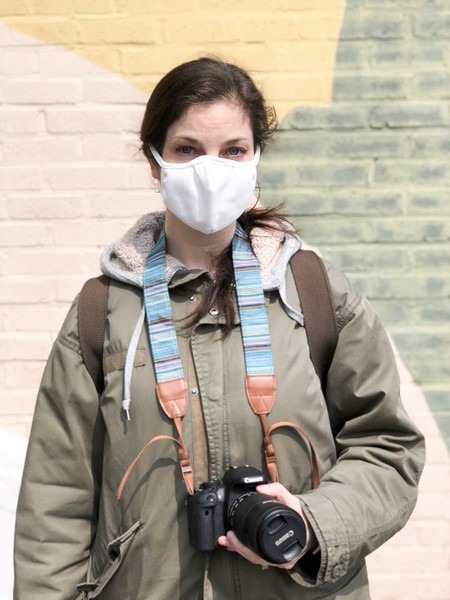
A respirator mask, or a mask that prevents fine dust particles from entering the body is the most effective mask to use. These masks are usually rated with a number like N95+/KF94 with the number representing the percentage of particles that are prevented by the mask. This means that an N95+/KF94 mask prevents 95% of particles from passing through. There are also N99 masks so this would mean that they prevent 99% of fine dust particles from passing.
In general, the higher the number, the better, however, the higher numbered masks can also be a bit more difficult to breathe in and hot so if you already have some breathing difficulty or don’t like the feeling, anything from an 80 upward is suitable.
On this note, reputable mask companies warn that people with breathing difficulties, children, and the elderly should not wear above an N80 due to the difficulty breathing. With children, and this has been something that is quite personal for us, it is difficult to find suitable masks and most concerned parents are instructed to keep children indoors as much as they can on high dust days. Last year, there were even schools cancelled for young children in order to keep them indoors.
The N series masks are suitable for your time in Korea. If you’re living in Korea, you’ll more likely see the masks that are rated with KF. What’s the difference? N ratings have been issued by the US National Institute for Occupational Safety and Health whereas the KF ratings have been issued by the Korean Occupational Safety and Health Agency. If you’d like more scientific data on the differences between the N and KF rated masks, there is a study that was done you can check out here: Comparison of Filtration Efficiency and Pressure Drop in Anti-Yellow Sand Masks, Quarantine Masks, Medical Masks, General Masks, and Handkerchiefs.
There are also R series masks but these prevent oil and aren’t necessary unless maybe if you’re an avid bicyclist who will be biking on the roads of Seoul and in Korea. These masks would prevent the harmful gases emitted by vehicles from entering.
Are surgical masks effective for fine dust?
Simply, no. These masks were commonplace before the air pollution became a major health concern, but people were wearing them for colds and anonymity in general. A lot of tourists come here and pick up a surgical mask or other basic cloth mask because they’ve seen Koreans wearing them in dramas or they’ve seen their K-pop idols wearing them as they walk the streets of Seoul.
The common surgical mask and cloth masks are only effective at catching one’s own bodily saliva and other bodily fluids to prevent the spread of infectious diseases. These masks are absolutely NOT designed to protect the wearer from inhaling fine dust particles. These have become a “trend” to some people but are not only not meant to stop fine dust, but the design is ineffective as well since the mask does not seal to the wearer’s face.
Which fine dust mask is right for me?
Single Use Disposable Masks
You can find a few different options for masks in most convenience stores and in pharmacies around Korea. These masks are only meant to be worn once and using them repeatedly decreases their effectiveness.
However, when I say “once”, I don’t mean you need to throw it away after a single commute to work for example. If you do plan to wear it for a day or two during commute, just ensure that you’ve stored it properly between use so no damage has been done. If there are a few days of moderate dust, you can reuse the same mask. If there is a day of extremely high dust, I’d replace the mask daily.
Respro
Respro is a British brand that sells masks a bit more targeted to use in urban sports environments but realizing there are more and more people just living in cities that need masks, they have begun to diversify their brand. Their masks can filter fine particles PM2.5 and they come in four different sizes. This is a more high-end purchase. You can buy these on Amazon.com
Can I go outside when the dust levels are high?
You certainly can, but I wouldn’t recommend it. Studies have shown that when the dust levels are high, an hour outside is the equivalent of standing in a confined space inhaling cigarette smoke for one hour and 24 minutes.
Where can we go on high dust days in Seoul?
On high dust, I personally like to head to very green places. Any spot that is indoor is suitable but for us, the greener the better. Maybe it’s something about trying to offset the dust with a ton of oxygen? I’m not sure. Here are a few ideas though.
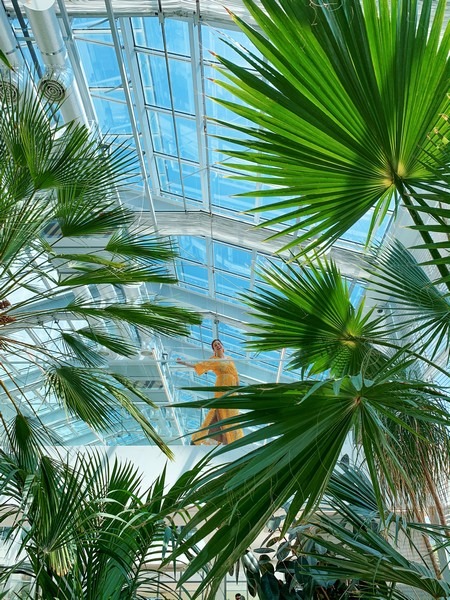
Greenhouse cafes: For about two years now there has been a trend to open these greenhouse cafes. I don’t know if it was just bound to happen or if it was in response to having so much bad air, either way, they’re beautiful and have clean air and make for a fun day out… even when it’s dusty. Dust usually makes us want to suck in as much oxygen as we possibly can and what better place is there to do that then at a greenhouse? Check out some of the best greenhouse cafes in Seoul that are trending right now. There are some really stunning ones so don’t miss them. There are also some outside of Seoul like Orangerie up in Paju to check out.
Lotte World Kids Park Undersea Kingdom: If you’ve got some kids and want to do something all for them, check out this awesome indoor theme park with the undersea kingdom theme. We took Ava here and she absolutely loved it. There are some amazing decorations that really give this undersea vibe and plenty of rides and experiential play zones for kids to get into. Buy your tickets online like the Koreans do to take advantage of the discounts.

Seoul Botanic Park: This awesome park is mostly outside but features a huge indoor greenhouse that is really warm and cozy so if it’s winter it feels awesome. If it’s summer, just be prepared for it to be hot inside and outside. It’s a stunner and there are also cafes inside and an area for kids to learn about plants. Whether it’s dusty or not, you definitely need to see this beautiful park and greenhouse. Check out the Seoul Botanic Park here.

The National Museum of Korea: This is a large and awesome museum that has free and paid exhibits to see. There are awesome things to check out for both adults and children and there is a cafeteria on the premises and cafe so you don’t have to go outside to find all of that. Great spot to spend the day for adults and children. Here is more information on the museum here.
Why do Koreans still open the windows on high dust days?
This is one of the most common questions I see from locals residing and working in Korea. They head into work on a high dust day, think they’ve entered their clean air refuge, remove their mask only to see a coworker opening the windows. What are they thinking? It’s dusty outside. Why are they letting all of the dust inside? It can become quite contentious but there is a reason and if you understand that reason, you might not feel so upset by the seeming lack of health awareness.
Air needs to be “exchanged”. If you grew up in a place that had a lot of clean air, you probably didn’t even think about not opening your windows. You were constantly exchanging your air without knowing it or thinking about it. Living in a city, people can lock themselves up tight in apartments to keep street noise at bay, keep the smog out, etc, but this could do more harm than good. Did you know that your flooring, wallpaper, books, desks, photos, pretty much everything in your house leaches something called volatile organic compounds (VOC’s)? Most teachers here are probably living in spaces with cheap furniture and laminate which emit the most VOC’s.
My Korean mother-in-law has always been adamant that we open the windows pretty much as soon as we wake up in the morning to air out the house. She doesn’t say we’re getting rid of VOC’s but that she doesn’t want to get “sick house syndrome”. It’s the same thing. VOC’s will affect you faster than the dust will. We air out our house every day but on high dust days, I just make sure to do it after Ava has left and just before I do.
My husband comes home after taking her to the bus and shuts the windows up again a half hour later. It’s a balancing act, but it needs to be done. Not only are VOC’s harmful to breathe in but they actually promote MOLD GROWTH. Mold is a horrible problem in Korean homes and buildings and if you’re having a mold issue, one of my biggest suggestions is to make sure you’re opening your windows every day. You actually need to air out your home three to four times a day. As soon as your close the windows, turn on your air purifier to clean the incoming air and you’ll be fine after 15 minutes
Did you like this post? Pin It!
